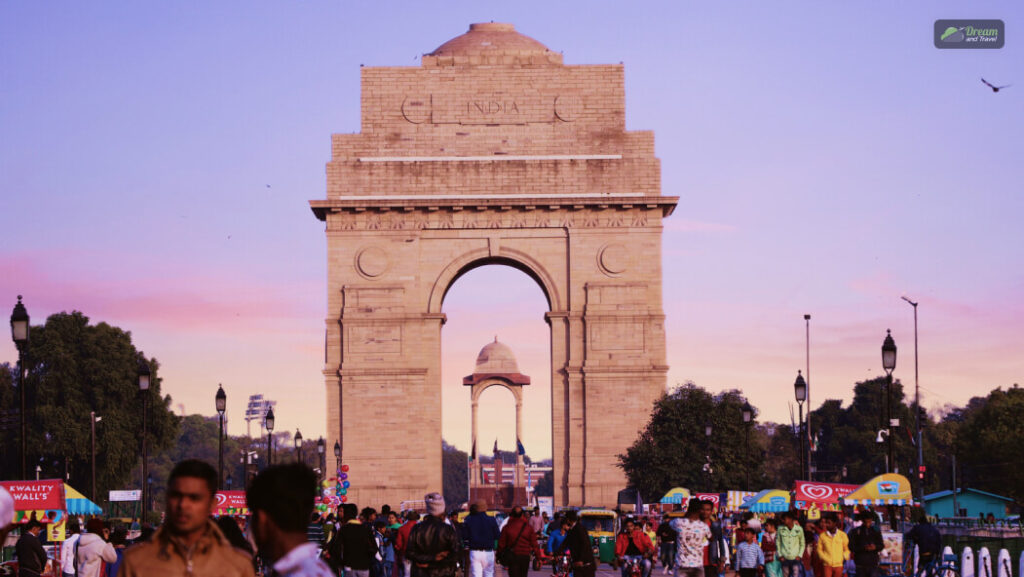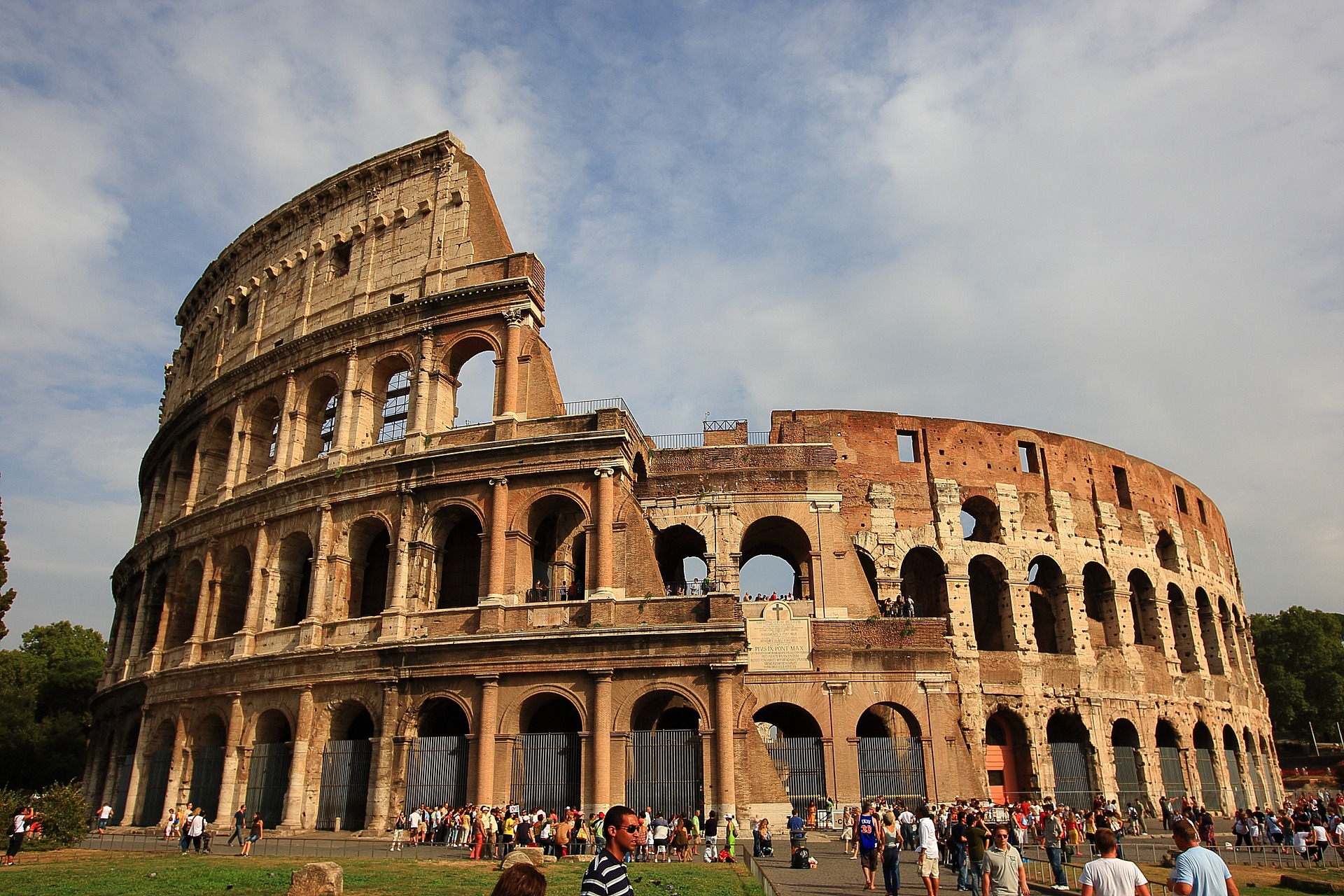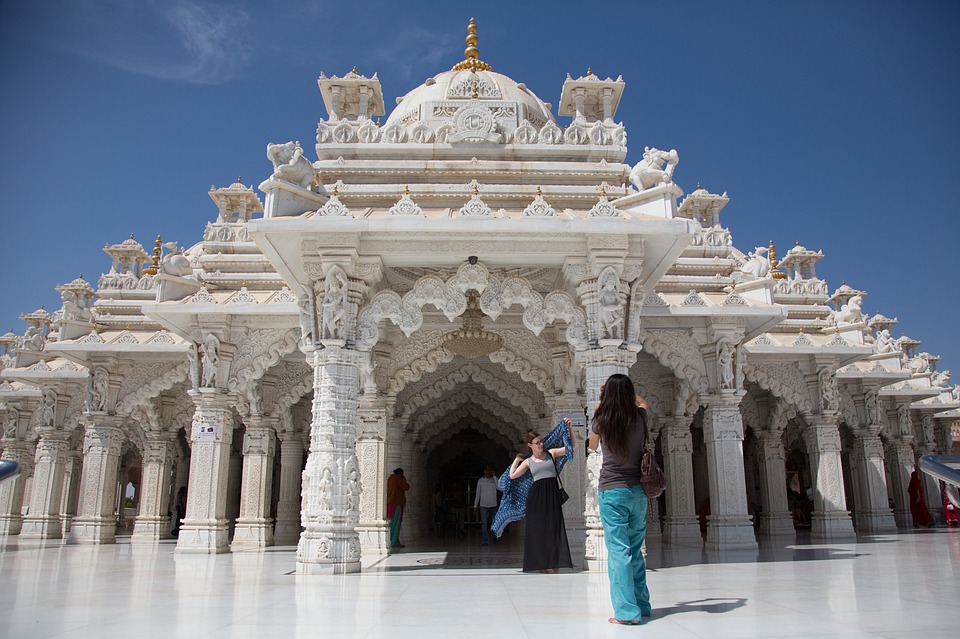So, it’s about the historical places in India! A daunting task is for me to curate the historical places of a country that is at least 5000 years old. Moreover, for centuries, various indigenous and foreign tribes have left the deepest mark in the history of the country.
Further, India has Varanasi at the center of its cultural, historical, and spiritual tourism. Also, one of the oldest “living cities” in the world, Varanasi or Kashi, is mentioned in the Rigveda and the Jataka Tales. Even Mark Twain has called Varanasi “older than history.”
So, in almost every nook of the country, there is a historically significant place. These places also weave the stories of the Mughal, British, Maurya, Gupta, Chola, Bahmani, and many other dynasties.
However, while most of us are aware of names like the Taj Mahal, Fatehpur Sikri, Red Fort, etc., we often miss gems like the Khajuraho Temple, Hoisala Temple, Mehrangarh Fort, Jantar Mantar, etc. Some of these are even UNESCO World Heritage Sites.
So, here, I will maintain a balance between the popular historical places in India and the lesser-known ones.
Furthermore, I will share a state-wise list of historical places in the country, including the ones discussed in detail here.
These Are The Most Famous Historical Places In India

| “If there is one place on the face of earth where all the dreams of living men have found a home from the very earliest days when man began the dream of existence, it is India!” Romaine Rolland, French Scholar, And Nobel Laureate |
What Romaine Rolland said about India also echoed the words of Mark Twain when he called India the “cradle of the human race.” Furthermore, he mentioned that the most artistic materials in human history are present in India.
So, no wonder the heritage tourism market in India reached $657.2 Billion in 2023, and by 2033, the said market is about to reach $1,316.4 Billion. (Source: Future Market Insights)
Further, while a lifetime is not enough to cover all the historical places in India, here, I have curated some of my favorites and the most popular ones.
However, before that, you must have a look at the table below, depicting the state-wise historical places in India.
| Indian State | Famous Historical Places In India |
| Andra Pradesh | ‣ Vijayawada ‣ Kurnool |
| Arunachal Pradesh | ‣ Tawang Buddhist Monastery ‣ Ita Fort |
| Assam | ‣ Rang Ghar ‣ Kachari Fort |
| Bihar | ‣ Archaeological Site of Nalanda Mahavihara ‣ Mahabodhi Temple Complex |
| Chattisgarh | Bhoramdeo Temple |
| Goa | ‣Churches and Convents of Goa |
| Gujarat | ‣ Dholavira ‣ Ahmadabad |
| Haryana | ‣ Asigarh Fort ‣ Gujri Mahal |
| Himachal Pradesh | ‣ Kangra Fort ‣ Hadimba Devi Temple |
| Jharkhand | ‣ Asura Sites ‣ Ashoka inscription on the Chandan Shahid Hill |
| Karnataka | ‣ Group of Monuments at Hampi ‣ Group of Monuments at Pattadakal ‣ Sacred Ensembles of the Hoysalas |
| Kerala | ‣ Mattancherry Palace ‣ Thalassery Fort |
| Madhyapradesh | ‣ Buddhist Monuments at Sanchi ‣ Khajuraho Group of Monuments |
| Maharashtra | ‣ Ajanta Caves ‣ Elephanta Caves ‣ Ellora Caves |
| Manipur | ‣ Kangla ‣ Mova Cave |
| Meghalaya | ‣ Nartiang Monoliths ‣ Khasi Heritage Village |
| Mizoram | ‣ Aizawl ‣ Siaha |
| Nagaland | ‣ Kohima War Cemetery |
| Odisha | ‣ Konark Sun Temple ‣ Barabati Fort |
| Punjab | ‣ Guru Ke Mahal ‣ Jallianwala Bagh ‣ The Golden Temple |
| Rajasthan | ‣ Jaipur City ‣ Jantar Mantar ‣ Hawa Mahal ‣ Mehrangarh Fort |
| Sikkim | ‣ Rumtek Monastery ‣ Namchi |
| Tamil Nadu | ‣ Great Living Chola Temples ‣ Vivekananda Rock Memorial |
| Telangana | ‣ Golconda Fort ‣ Charminar ‣ Bhongir Fort |
| Tripura | ‣ Ujjayanta Palace ‣ Tripura Government Museum |
| Uttarakhand | ‣ Almora ‣ Ranikhet |
| Uttar Pradesh | ‣ Agra FortTaj Mahal ‣ Fatehpur Sikri |
| West Bengal | ‣ Darjeeling Himalayan Railway ‣ Santiniketan ‣ Victoria Memorial |
Moreover, as a union territory, Delhi has many important historical places like the Red Fort, Humayun’s Tomb, Jama Masjid, India Gate, etc.
In addition, the Andaman and Nicobar Islands have the notorious Cellular Jail, one of the most iconic historical places in India.
1. Taj Mahal
If you are a history buff and admire the Seven Wonders of the World, then you can tick off your bucket list. The Taj Mahal is a beautiful specimen among the Seven Wonders of the World. And it is one of the most famous historical places in India.

All over the world, the Taj Mahal is considered the “epitome of eternal love”. Built by Shah Jahan for his late wife Mumtaz Mahal in 1632. The construction took about 22 years to complete, with the combined efforts of 20,000 people.
Entry Fee– Indians INR 40
Foreigners INR -1000
Opening– Half an hour before sunrise
Closing– Half an hour before sunset
Must see– Night Shows
Built by Shah Jahan
Year– 1648
2. Agra Fort
During the Mughal Rule, India was adorned with some beautiful monuments; of them is the Agra fort. Built completely of red stone, the construction began in 1565 by Mughal Emperor Akbar. The fort is among the 10 historical places in India.

The fort has two famous gates called the Amar Singh Gate and the Delhi Gate. If you enter through the Amar Singh Gate, you can visit the inner quarters of the fort. The mosques, palaces, courts, and gateways.
Entry Fee– Indians INR- 40
Foreigners INR– 550
Opening– 6 am
Closing– 6 pm
Must See– Nagina Masjid, Mina Masjid, Moti Masjid, Zenana MIna Bazaar and Jahangir Palace.
Built by– Akbar and Shah Jahan
Year– 1573
3. Red Fort
Mughal Emperor Shah Jahan gave us some of the most beautiful architectural marvels, like the Red Fort. It took more than 10 years to finish the construction of the fort. Though the name signifies the colour of the fort as “red.” But originally, the colour of this massive fort was white.

It was made out of Limestone, hence the colour, but when the colour started to chip off, the British had to paint it red. The fort was originally known as the Qila-e-Mubarak.
Entry Fee– Indians INR- 10
Foreigners INR– 250
Opening– 9:30 am
Closing– 4:30 pm (Monday closed)
Must see– The Rang Mahal, where the females, like the wives, maids and mistresses, resided.
Built by– Shah Jahan
Years– 1639
| Did You Know? Jawaharlal Nehru hoisted the Indian National Flag at the Red Fort for the first time on 15th August 1947, the year of India’s independence from the British Raj. Further, this tradition is still followed even on August 15th, 2024, when the present prime minister, Narendra Modi, hoisted the National Flag and addressed the nation from the Red Fort. |
4. Fatehpur Sikri
Fatehpur Sikri was once the capital of the Mughal Empire during the rule of Emperor Akbar. This royal city has a number of beautiful public buildings and living quarters for the king, servants and the army.

The place has beautiful gardens with decorated pillars. This was one of the well-planned cities in 1569. But, due to the water, the fort was abandoned.
Entry Fee– Indian INR- 40
Foreigner INR– 510
Opening– 6 am
Closing– 6 pm (Friday closed)
Must see– Diwan -i- Aam & Diwan -i-Khas
Built by– Akbar
Year– 1569
5. Hawa Mahal
Also known as the “Palace of Winds,” Hawa Mahal looks like a massive honeycomb with intricately beautiful 953 windows. The building is shaped like a crown built by Maharaja Sawai Pratap Singh. This is one of the significant historical places in India.

The building is one of the tallest buildings in the world without any foundation. As the building is curved, it stands strong with a pyramid-like shape.
Entry Fee– Indian INR- 10
Foreigner INR– 50
Opening– 9:30 am
Closing– 4:30 pm
Must see- The intricate detailing on the windows
Built by– Pratap Singh
Year– 1799
6. Khajuraho Temples
To gaze upon the raw eroticism of architectural phenomena, Khajurao Temple is the best place for you to visit. The temple is curved with countless carvings to depict love, beauty, eternal grace, art and delicacy.

The Khajuraho temple is a perfect example of two religions coming together, Hinduism and Jainism. The whole temple has carvings of Apsaras, cult icons, and demi-gods.
Entry Fee– Indian INR- 10
Foreigner INR– 250 (But only for the Western temples, as the rest are free)
Opening– 8 am
Closing– 6 pm
Must see– The light and sound show depicting the story of the Chandela Dynasty.
Built By– Chandela Dynasty
Years– 950AD TO 1050AD
7. Sanchi Stupa
The Sanchi Stupa is one of the most significant historical structures ever unearthed in India. Built around the 3rd century B.C. by Emperor Asoka. It is the most significant religious centre in Buddhism.

The Dome of the Sanchi Stupa is to signify the “Wheel of Law.”And the stupa is actually a symbol of Buddha’s freedom and the “circle of life and death.” The four gates of the stupas have been mentioned in the Jataka tales and stories about Buddha’s life.
It is believed that the Sanchi Stupa contains the ashes of Buddha himself, though it was never confirmed.
Entry Fee– Indian INR- 10
Foreigner INR– 250
Opening– 8:30 am
Closing– 5 pm
Must See– The Ashoka pillar that has the statue of four lions built in a Greco-Buddhist style. It is also the national emblem of India.
Built by– Emperor Ashoka
Year– 3rd century BCE
8. Victoria Memorial
One of the more modern historical places in India was built during British Rule. The Victoria Memorial was built by Lord Curzon, who was also responsible for the partition of the state of Bengal.

The beautiful monument is situated in the middle of a beautiful lush green garden. The memorial is like a museum filled with weapons and relics from British rule. Like paintings, statues, sculptures, and other artefacts.
Entry Fee- Indian INR- 20
Foreigner INR– 200
Opening– 5:30 am
Closing– 6:15 pm
Must see– The “Angel of Victoria” acts like a weathercock on windy days
Built By– Lord Curzon
Year– 1921
9. India Gate
Located on the Rajpath, this 42-meter tall monument is sometimes compared with the Arch of Constantine in Rome and Arch de Triomphe in Paris. The India Gate is dedicated to the lives of 82,000 soldiers, both Indian and British, who gave their lives in WWI.

Every year on Republic day, the parade is held in front of the Gate. It is the spot where the Amar Jawan Jyoti, “the eternal flame”, still burns bright.
Entry Fee– Free for all
Opening– All time
Must See– The Amar Jawan Jyoti, Children’s Park
Built by– Edwin Lutyens
Year– 1931
10. Ajanta And Ellora Caves
One of the most beautiful caves in India, with spectacular craftsmanship with rock carvings done by hand. Discovered by John Smith in 1819, a British officer. The Ajanta and Ellora caves are full of beautiful carvings and sculptures and paintings of Jainism, Buddhism and Brahmanism.

There are about 29 caves full of artwork in Ajanta and about 39 caves in Ellora. In Ellora, there are 12 Buddhist caves, 5 Jain caves, and 17 Hindu caves.
Entry Fee– Indian INR- 10
Foreigner INR– 250
Opening– 9 am
Closing– 5:30 pm (Ajanta is closed on Mondays & Ellora is closed on Tuesdays)
Must See– The multiple caves and the artwork
Built by– Satavahanas and Vakataka
Year– 200BC to 100AD, 5th Century AD
11. Hoisala Temple
Three Hoysala temples of Karnata, or the “Sacred Ensembles of the Hoysalas,” are the 42nd UNESCO World Heritage Site in India. The following temples are part of the Hoysala temple ensemble.
- Hoysalesvara Temple in Halebidu
- Keshava Temple in Somanathapura
- Channakeshava Temple in Belur
Moreover, these architectural marvels from the 12th and 13th centuries are crucial for the understanding of the evolutions of Hindu temples.
12. Mehrangarh Fort

Mehrangarh Fort is one of the largest forts in Rajasthan, and it houses some of the most amazing palaces in the country. Further, today, the Mehrangarh Fort Museum has important relics of the country, especially from the reign of the Rajput Clan of Rathores.
Moreover, along with being one of the prominent historical places in India, the Mehrangarh Fort is also in the spotlight these days as the shooting spot for movies like The Jungle Book and Dark Knight Rises.
13. Jantar Mantar (Jaipur, Rajasthan)

Jantar Mantar in Jaipur is another UNESCO World Heritage Site in India. Further, built by Sawai Jai Singh, a Rajput King, it has 20 main astronomical instruments.
Moreover, the observatory, an 18th-century marvel, practiced the tradition of the Ptolemaic positional astronomy. In addition, Jantar Mantar played a crucial role in the completion of the astronomical tables of Zij.
Read Also:













